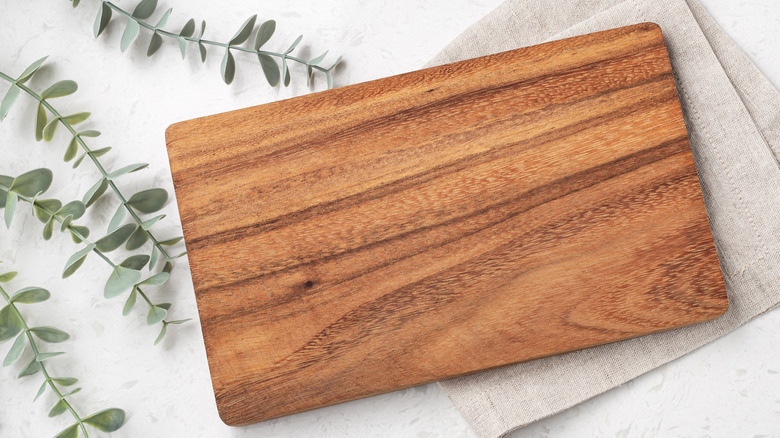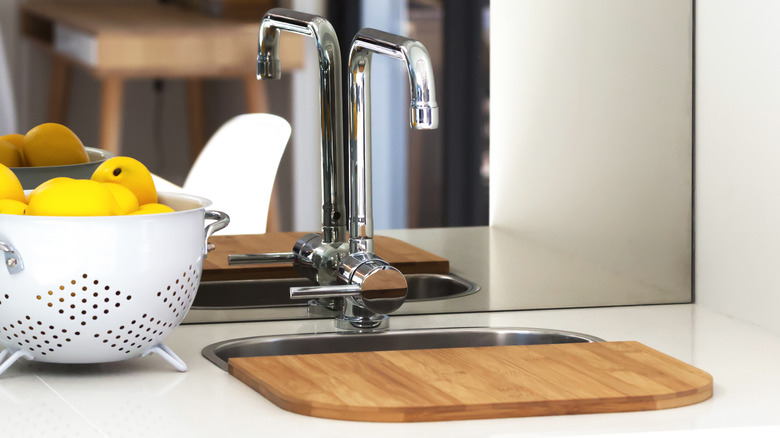Get Creative With Your Cutting Board To Add Essential Counter Space
The biggest frustrations of having a tiny kitchen are the limited storage space and counter space — two essentials for a smooth cooking experience. While you could declutter and get rid of unnecessary kitchen items so you only have what can fit in the few drawers and cabinets, or you could look for spots in other rooms in your house to keep the less frequently used kitchen gadgets and utensils ... getting additional counter space is a bit more tricky. However, there's a simple hack for acquiring more working space that involves using large cutting boards or a carving board.
Instead of letting this flat kitchen item occupy precious real estate on the countertop when cutting and chopping, place it over your stove or sink and instantly get extra workspace you didn't have before. The stovetop, for example, is usually left idle when prepping vegetables and other ingredients before you start the actual cooking. So, if you place your cutting board there during ingredient prep, you'll not obstruct anything. Then once you're ready to start cooking, simply clear the countertop of scraps and other utensils you're done using for prep. Move the cutting board back to the counter, and now you can turn on the stove. On the other hand, placing the cutting board over the sink offers an additional benefit apart from the extra counter space: proximity to the tap and therefore ease of washing ingredients and utensils.
Tips for turning your cutting board into impromptu counter space
To ensure this hack works for you, choose the right cutting board. First, the best cutting board should be big enough to cover the whole stovetop or go across the sink. The board that goes on top of the stove will benefit from having supporting legs that elevate it above the burners. This way, you don't have to worry about applying too much pressure on the burners and risk damaging the stove's heating elements. Additionally, whether the board goes over the stove or sink, attaching rubber feet on the bottom is a great trick for using the cutting board that helps increase stability and prevent sliding. You can make these additions on your own as a DIY project to customize your regular cutting board or buy one that's already designed for this particular role.
Lastly, another prime spot to place a cutting board for extra counter space is over a drawer. Just pull out any drawer that's right under your countertop and position the cutting board across. For this setup, we recommend you only use the extra flat surface to hold already prepped ingredients. Since the pulled drawer isn't a sturdy surface, it can break or come off the hinges if too much pressure is applied on top through activities like chopping, cutting, or holding heavy kitchen items. Try any of these cutting board hacks and you'll have a bit more workspace in your tiny kitchen.

